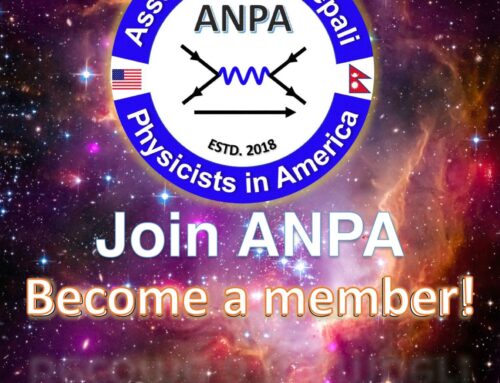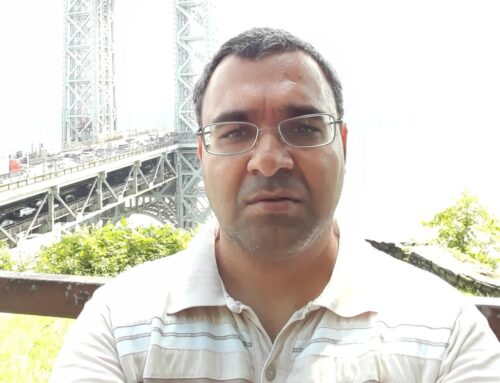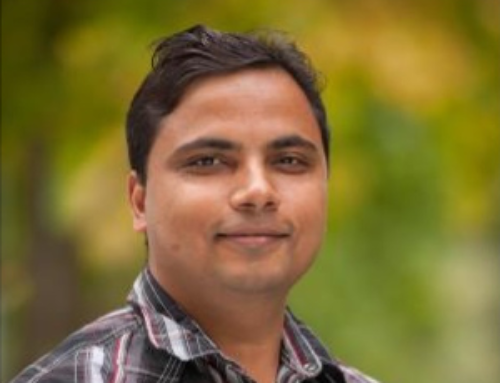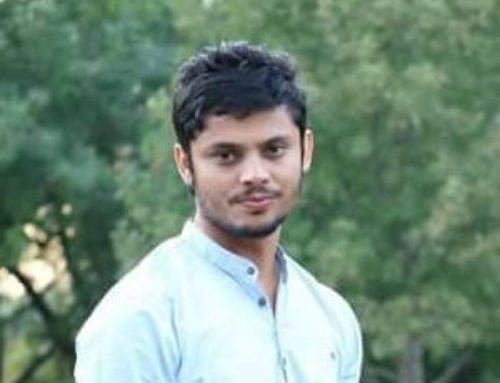I am Bishwanath Gaire, a member of ANPA. I grew up in Darlamdanda, one of the most beautiful villages (in my view) in Palpa, Nepal. My educational background is fairly typical (in a sense under the assumption that other ANPA members may have similar paths). I completed my secondary level education at Darlamdanda Secondary School, Palpa. For my undergraduate study, I completed intermediate (I. Sc.) and bachelor’s (B. Sc.) degree from Tribhuvan Multiple Campus, Tansen, Palpa, and master’s (M. Sc.) degree in Physics from Central Department of Physics (CDP), Tribhuvan University (TU), Kirtipur, Kathmandu. After a few years of teaching at different institutions, including the CDP, TU, I came to the USA for graduate study and completed my Ph.D. in Physics from Kansas State University, Manhattan, Kansas.
I would say I got into physics as a way of exploring the next steps on the educational ladder. I don’t recall having any extraordinary interest or an inspiring figure to follow. Going to school and studying felt like a seasonal duty as we had to spend most of the time after school helping our parents with the household and agricultural work. When at high school, we did not even have a full-time science teacher; a few students from our class actually left the school and went to other schools at district headquarter, Tansen, for this reason. At that time, I thought about becoming a high school science teacher that would require B. Sc. degree. However, during my B. Sc. studies, I got a decent score and talking with other friends about the next steps, I decided to pursue M. Sc. One of the reasons was that I could get a teaching position at colleges or campuses if I completed M. Sc. and I thought it would be nicer than teaching at high school.
So far, my educational journey was shaped as I learned and found more about the next steps. This was also what happened after M. Sc. While studying at the Central Department of Physics, the idea of going to the USA for Ph.D. developed by seeing that others have taken this path. After gaining some teaching experience at college-level courses and completing the graduate applications to a few universities, I joined the Physics Department of the Kansas State University for Ph.D. I chose to do research on experimental Atomic, Molecular, and Optical Physics and completed Ph.D. in 2011 with a dissertation entitled “Imaging of slow dissociation of the laser induced fragmentation of molecular ions.”
After completing my Ph.D., I got an offer for a postdoctoral fellow from Lawrence Berkeley National Laboratory and joined one of the groups in the Chemical Sciences Division. I conducted research in the Advanced Light Source, a user facility, with a team of international collaboration. My main role was consulting the collaborators to propose and prepare the multi-coincident experimental setup for the scheduled time (often called beam time), train students on how to collect and analyze the data, and finally publish the results. This was an exciting opportunity to know and work with a great team but was also extremely challenging in the sense that the setup has to work on the scheduled time otherwise all the efforts would be wasted. In order to repeat the experiment for whatever reason, we would have to wait for another six months or a year for the beam time. The work schedule during beam time (which lasted about two to three weeks at a time) was intense; I had to work long hours including nights and weekends. It is due to this intense work schedule that I decided not to continue research in this direction. I looked for alternative career opportunities that I can still be connected with the research community but with a regular work schedule. This led me to my current position, an editor in a research publication.
I joined the editorial team of Nature Communications in 2016. This is a journal published by Springer Nature. In my current role as a senior editor, I handle manuscripts in different areas of physics, mostly in AMO Physics, Plasma Physics, and Nuclear Physics. Manuscript handling involves multitasking and making informed decisions in a timely fashion. I like looking into the new manuscripts that are submitted each day. It is exciting and motivating to see what kind of new results are discussed in these fresh submissions, being updated on the cutting-edge research and knowing the evolving research direction for a particular field. I also like the interaction with researchers (who are either authors or act as reviewers) working together in order to keep the research community moving together, going to conferences (including virtual ones) and lab visits. In addition, I don’t have to worry about the experiment not working or the lack of funding to support the research program or a team. One thing that I do not enjoy that much is sending our rejection letters but this is the part of the job.
As I mentioned, being an editor is being a part of the broader scientific community and so community outreach is very important for me. I go out and visit labs at different institutions, give talks on writing and publishing, on editorial and peer review of research articles or sometimes about a day in an editor’s life to early career researchers (students, postdocs who may be looking for an editorial job) give an idea on what daily work feels like.
My view is that if you are interested and inspired to study physics, it is great and you go for it. But even if you don’t have a concrete plan, you can still manage by learning on the fly from the situation and adapt accordingly. Additionally, having a clear plan and goal would definitely be beneficial for the career path but it is not something you must have. There may be careers that you can pursue even if you’re not aware of them at an early stage or some of them may not exist today but appear later with new technology.





A inspiring story of Biswanath sir
Very exciting journey Bishwanath Sir!